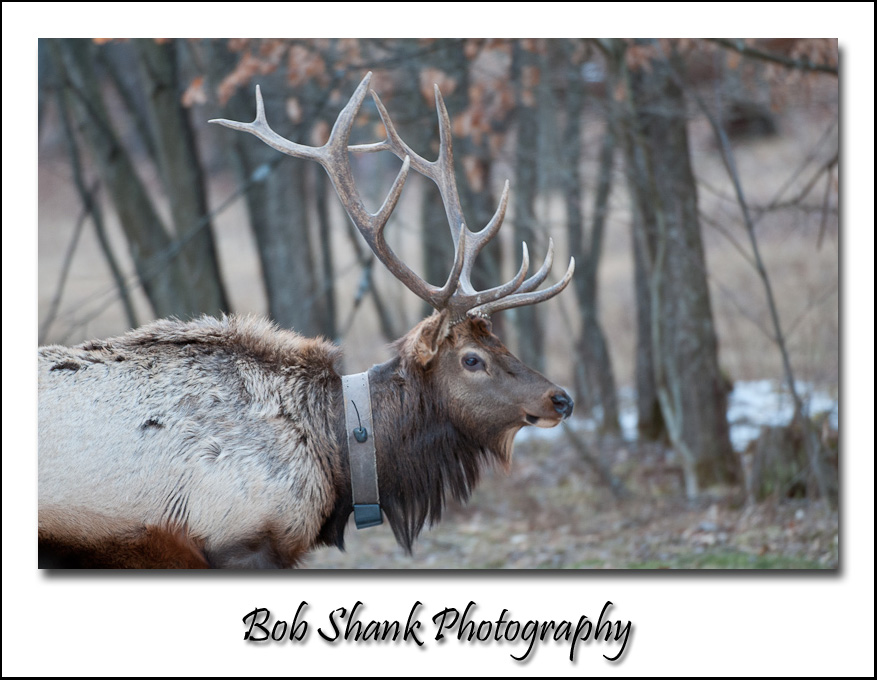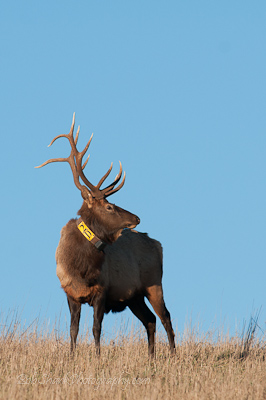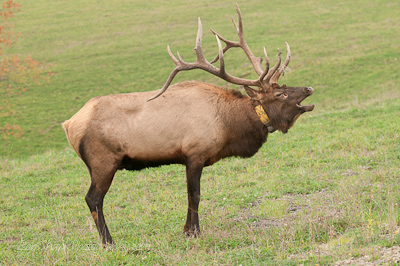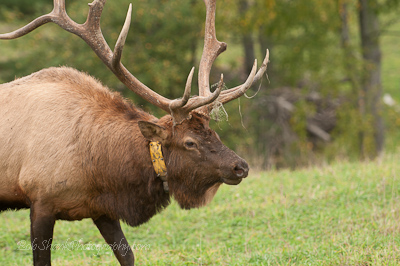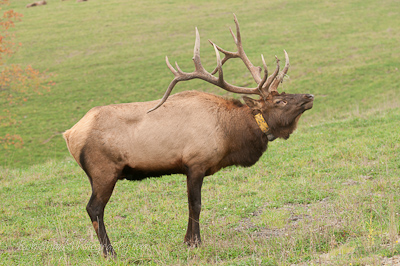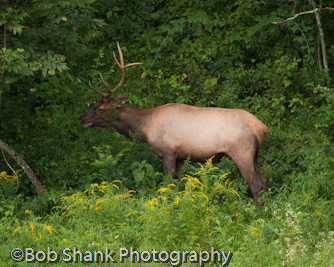
This week I had the privilege of being in the Elk Country of Pennsylvania with my good friend and fellow photographer, Dick McCreight, of Bluestem Photography. Dick is an amazing photographer and I always enjoy our photo times together as we learn and stretch one another. This week was a prime example of this collaborative learning experience.
We saw and photographed a lot of elk over the past four days. Circumstances beyond my control prevented me from joining Dick on the first day, so he had a nice head start on me. It is always difficult to hear about and see photographs that are captured in your absence! I was encouraged that Dick was seeing and photographing elk and I hoped it might continue. It did!
Dick had to leave a little earlier than me, so we said our goodbyes. There was still about an hour of useable daylight, so I headed back out to try my luck.

Light is a funny thing and unpredictable at that. One moment the light stinks and then the next it is absolutely gorgeous! This evening out on Winslow’s Hill was no exception. The day was mostly overcast but as the sun began to make its way to the horizon, some of the clouds parted, creating streaks of sunlight onto the scene I was photographing. It didn’t take long for me to get into the right position, and as you can see in these first two photos, the elk cooperated as well! The first photo is my favorite so far, but I still have more photos to sift through and edit. By the way, all these photos here are completely unedited and straight out of the camera. The light was so good!
I also need to thank Moose Peterson who through his book, “Captured,” and his magazine, “BT Journal,” is teaching me to see the light! Sorry for the bad pun; but since my family is tired of me trying to be funny, I thought I’d try it here! Anyway, I am learning from Moose about the different qualities of light and how to use light in my photographs. Thank you Moose, I think these photographs show that I am learning from you!

This particular evening was the third time I photographed elk in this same field. I guess they were getting used to me and realized that I was presenting no danger to them. I walked onto the field after spotting the elk, walked down the dirt road toward them and they readily accepted me. You can always tell a lot by the little behavioral signs an elk portrays. Ears, eyes, tails, and general body movement are like reading a book. Every detail is important so the photographer has to pay attention to all this!
My general procedure when photographing the elk of Pennsylvania is to approach slowly and very casually. Lennie Rue III and Len Rue, Jr. taught me to act as unconcerned about the elk as possible, almost like you don’t even care about them. This nonchalant attitude helps the elk realize that we are not hunters who are going to shoot them. Rather, we are photographers who are going to shoot them in a much different way and over and over again! I approach the elk, reading all their signs. Then, as I get closer, I only approach when their heads are down while they are eating. When they look up, I stop, look around and act as causal as possible. This approach and a great deal of patience helps me get closer to the elk.
On this particular evening, the elk readily accepted me. I literally had elk all around me at one point! They were busy eating a new crop of hay and they were feeding in every direction possible. Once in a while, they would look up to study me, but for the most part I was just like another tree to them.
Then something happened.

I was photographing this cow when it started looking intently in a direction beyond me. As you can see in this photograph, the elk is looking in my general direction but somewhere behind me. It took me a while to really notice this, but then, as if on cue, all the elk began to exhibit an uneasiness that I could not explain. It is always amazing to me how wild animals communicate with each other. This time, the warning sign of alert was communicated and every elk stopped eating and was staring in the same direction. Something of interest was happening behind me; but what?
I thought that maybe another elk was coming into the field out of the woods behind me because I observed this earlier in the morning. There was a loud clashing as an elk bumbled onto the scene and the elk in the field looked in her direction when they heard the sound. But this was different. The intent stares of the elk and their body language indicated to me that something was wrong.
I even spoke out loud to the cow I photographed in the above photo, asking, “What’s wrong?” Yeah, I do talk to the animals. They never talk back, but Lennie Rue III teaches that he learned a lot while growing up on a farm. One time he came up behind a horse and surprised it so much that it kicked him square in the chest with both hind feet! He learned an important lesson. Talking to animals in an almost monotone and comforting manner is often helpful, and so I practice this every time I am in the field with the Pennsylvania Elk. “Hi, there. Don’t worry; I’m not going to hurt you.” Call me crazy, but sometimes I even think they understand me!
Something was wrong behind me this evening and every elk in the field knew it and saw it before I did. So after, asking, “What’s wrong?” I turned around to see this:

A black bear!
Now I knew what the elk were so intently looking at and it was obviously cause for great alarm to them. Some of the cows are now on the brink of giving birth to their calves. Black bears in Pennsylvania pose a definite threat to these baby calves. The Pennsylvania Game Commission conducted several elk calf studies over the years. You can read more detailed information about these studies and their findings here: Richardson, Lori D. Pennsylvania Game News November 2007: 31-37.
This recent study revealed that bears are not as big a threat to Pennsylvania Elk as they are to the Rocky Mountain Elk. Some of this is due to the mere numbers of the elk out west compared to the relatively lower numbers here in the east. Whitetail fawns are much more at risk here in our state. Nevertheless, a cow elk will definitely pay attention when it sees a black bear.
So here was the subject which attracted all the attention of these elk. I was the last one to realize it!

Now, I’ve been in the wood and fields of Pennsylvania all my life, so I know full well that predicting the size of a bear is anything but an exact science. I’ve seen the bear check stations where hunters bring in their bears to be weighed and studied by the Pennsylvania Game Commission. Seeing is not always believing because what oftentimes looks like a huge bear simply is not. This is particularly true when a bear is by itself with nothing which to compare. I will suffice it to say that this bear was no cub.
I also know enough about bear behavior that black bears pose very little threat to adult humans. Grizzly bears and Polar bears are much different! So, even though I was in the middle of this field and a bear appeared out of the woods on the field’s edge, I was not concerned. I started photographing the bear, overjoyed to be experiencing this amazing encounter in elk country!
But then something happened that caught my attention again!

The black bear started walking right toward me!
(To Be Continued…)














